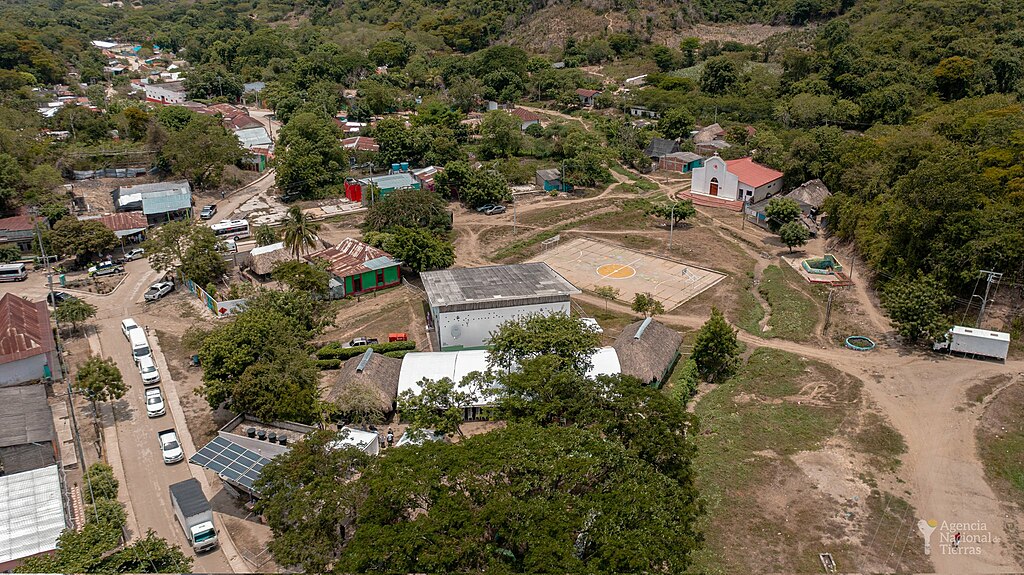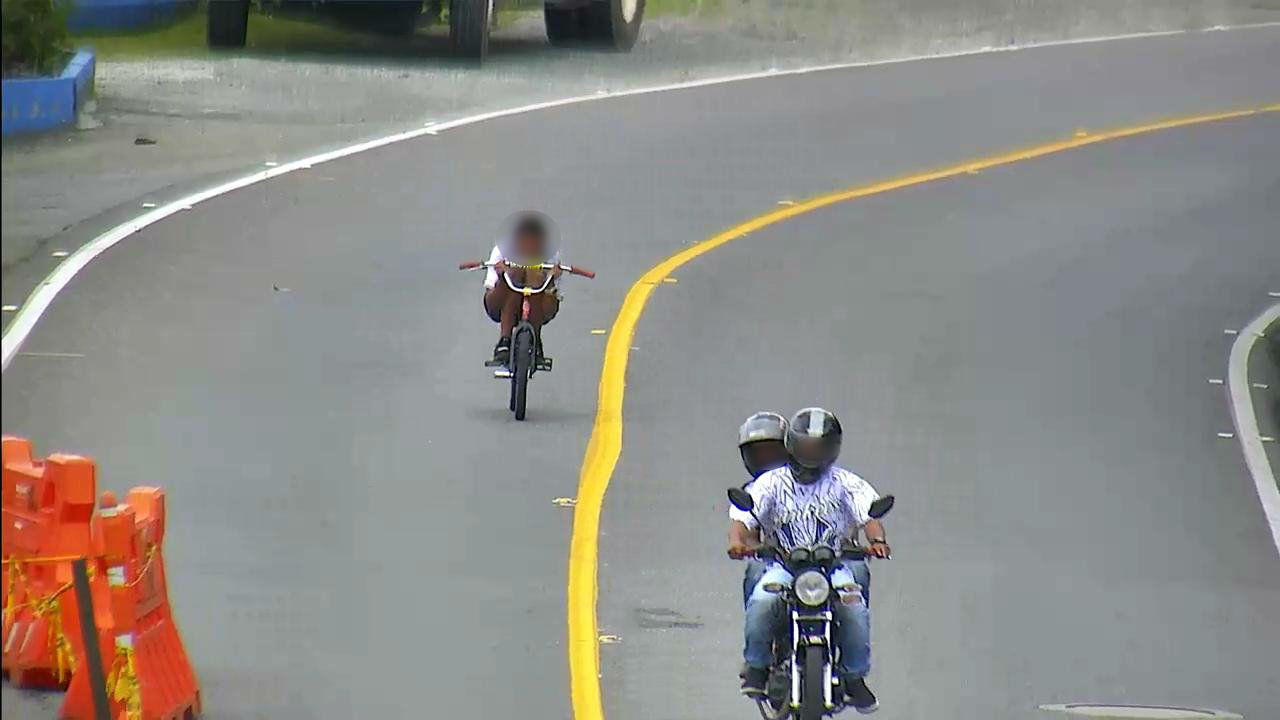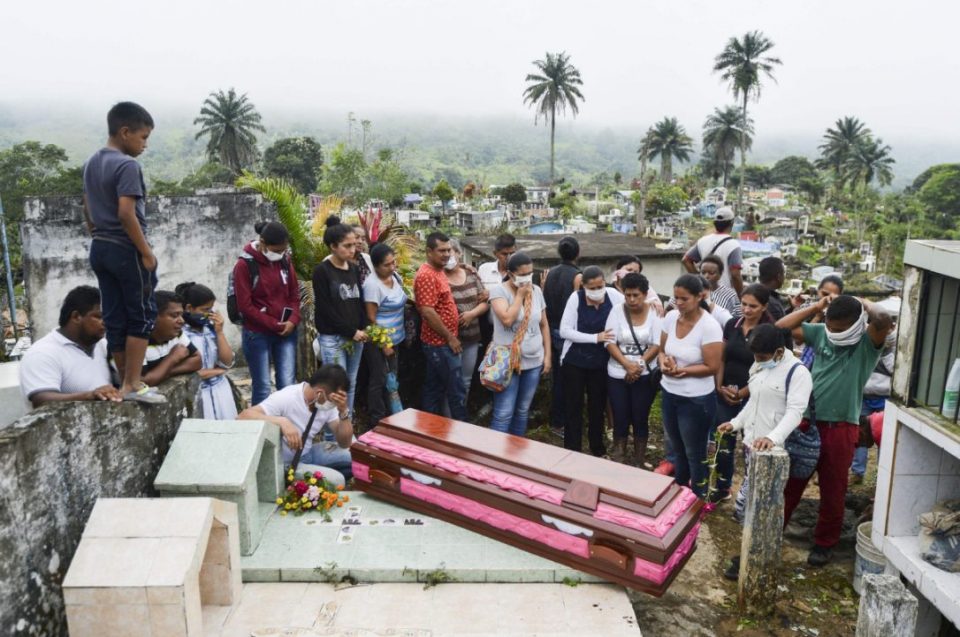El Salado has become a focal point for peace initiatives. But it’s also a living example of how much still needs to be done.

The El Salado massacre has been described as one of the bloodiest and most atrocious of Colombia’s conflict. For four days in February 2000, 450 paramilitaries held the small town hostage. The members of the United Self-Defense Forces of Colombia (AUC) tortured and raped the town’s inhabitants, killing at least 60 locals. According to the Centro Nacional de Memoria Histórica, many of the 7,000 people who lived there have never returned.
El Salado has become a focal point for peace initiatives, such as the recent workshop held there by the Ministry of Education. However, those activities take place against a backdrop of violence. Rural peace remains elusive, at both a national and local level.
Peace education workshop
Last week, senior officials from the Ministry of Education (MoE) held a three-day peace education workshop and event of historical memory at the site of the El Salado massacre. Educators from Ibagué, Medellin and Valledupar also attended.
The event included artistic and cultural presentations, as well as discussions with social leader and documentary-maker, Soraya Bayuelo. Importantly, attendees met with victims of the 2000 massacre. The workshop represents an ongoing commitment to peace education and the continuation of a transnational peace project between Colombia and Japan.
In 2019, Colombian educators joined a three-week training programme in Okinawa, Japan. The Colombian MoE and the Japan International Cooperation Agency sought to strengthen abilities for peace education, memory and reconciliation. Four years later, the peace education projects conceived in Okinawa were reviewed at El Salado and new plans laid.
Peace education is under-resourced
The Ministry of Education’s recent workshop in El Salado is a powerful representation of the progress made towards peace in Colombia. But, under the surface, peace and peace education are falling short.
In spite of the 2016 peace agreement, armed groups continue to terrorise rural populations. As a 2021 report from the human rights advocacy group WOLA put it, “Implementing the accord has gone more poorly than anticipated, and opportunities to break the cycle of violence are evaporating.”
The Kroc Institute found as of November 2022, 51% of the 578 commitments had not yet been initiated or were at a minimum state of implementation. Peace education, like other commitments of the peace agreement, is incomplete and under-resourced. A source at the MoE told The Bogotá Post, that allocated funds are distributed by population, benefiting larger cities while leaving rural communities – most affected by the conflict – without. Further still, according to University of Manchester research, no assessment of the effectiveness of peace education has ever been undertaken by the MoE.
The state of peace education lends credence to the charge that peace implementation is in crisis in Colombia. Those gaps are increasingly evident in the Montes de María, where El Salado is located. The region straddles the northern departments of Sucre and Bolivar in northern Colombia. Both departments have – and continue to – suffer high levels of violence.
The Colombian ombudsman has issued several warnings about the heavy presence of armed groups in the region. The demobilisation of the FARC left a power vacuum that has been filled by armed gangs in various parts of the country. Montes de María has historic value to these groups as it is a place where they can cultivate and traffic drugs. With the traffickers, the violence follows.
It isn’t easy to build peace, especially in areas where coca cultivation is so entrenched. It involves establishing a state presence, building infrastructure, as well as reconciliation and education activities. The government has historically been more concerned with disarmament than with implementing structural reforms that might address the socio-economic and political problems that lie at the heart of the violence.
There’s no clearer evidence of this than the Kroc Institute’s analysis of the implementation of the peace agreement. The completion of rural reform commitments made in the agreement stands at an underwhelming 21%, in comparison to a 70% completion or partial completion of commitments around implementation, verification, and endorsement. The failure to materialise reforms leaves rural communities overlooked by the government and vulnerable to violence.
To teach a peace education that contextualises the causes of violence without addressing the material conditions of its citizens makes peace education in Colombia at best, paradoxical, and at worst, insincere. How can peace be effectively taught while violence thrives?





